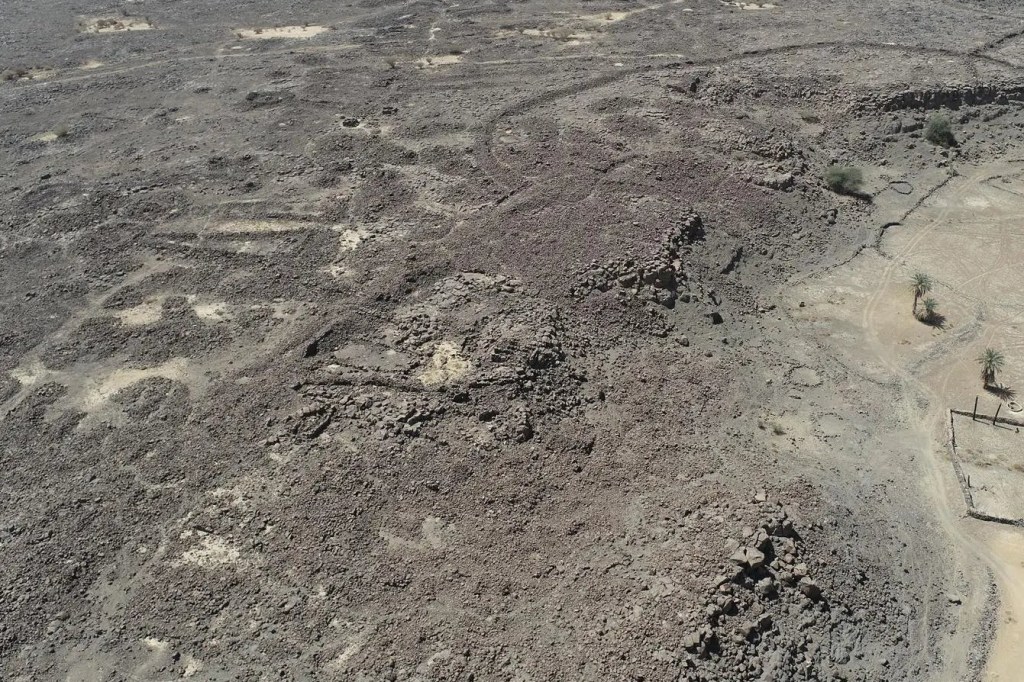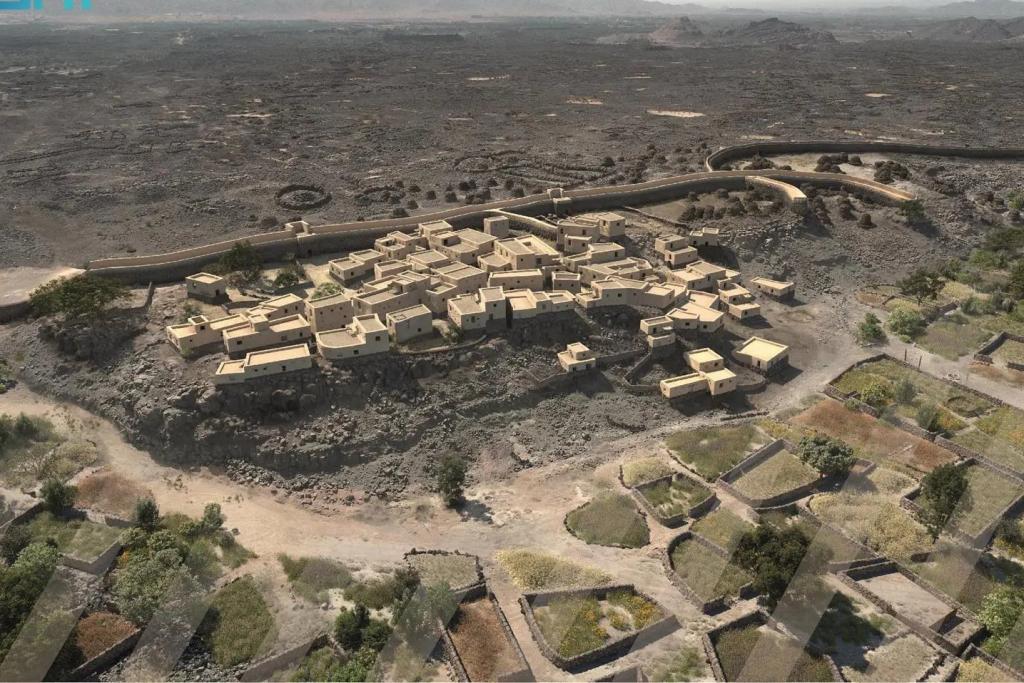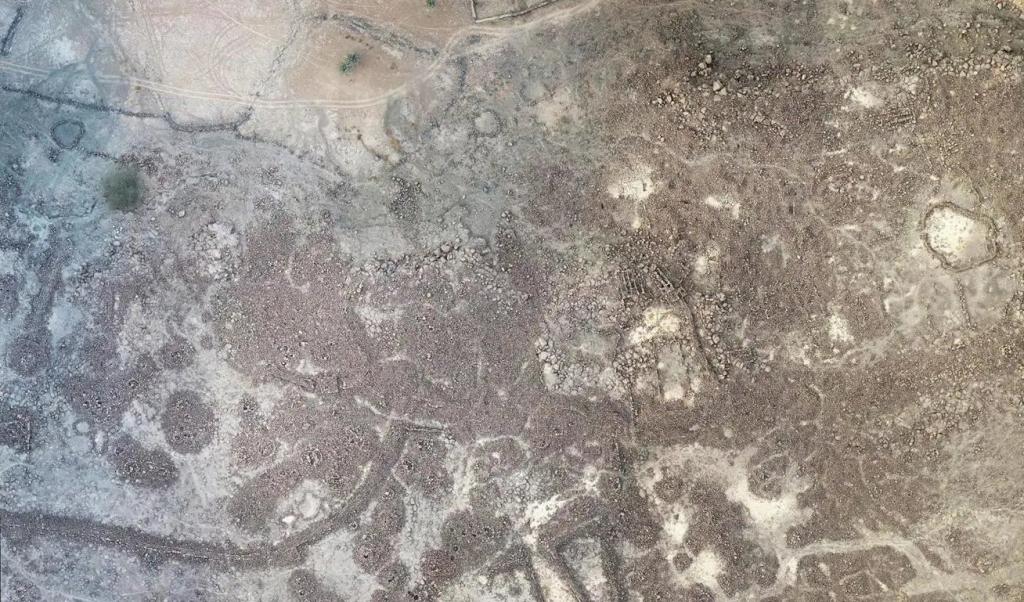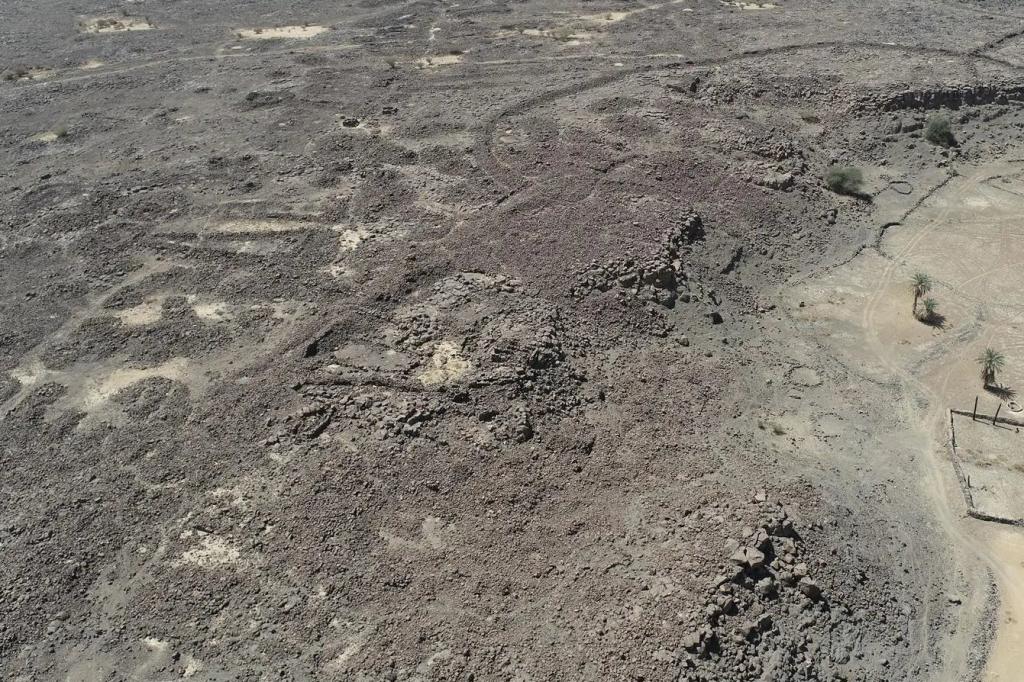Archaeologists make remarkable discovery of 4,000-year-old town hidden in Arabian oasis
The remains of a long-lost town dating back to the early Bronze Age were uncovered in a Saudi Arabian oasis by archeologists who say the stunning discovery offered proof of the region’s shift from a nomadic to urban existence.
A French-Saudi research team unearthed the 4,000-year-old hidden town – named al-Natah – within the walled oasis of Khaybar, a fertile land surrounded by desert in the northwest of the Arabian Peninsula, according to a new study.
The ancient town, which dates back to 2400 BC, is believed to have been a 2.6-hectare settlement with around 50 multi-story homes that housed approximately 500 residents, French archaeologist Guillaume Charloux, who led the study published in the journal PLOS One, told AFP.
Charloux said the well-structured community was surrounded by protective ramparts and also included a probable decision-making zone and a necropolis, containing metal weapons and stone such as agate.
His team of researchers also believe the town was home to a powerful leader based on the approximately 16-foot high ramparts, the outlet reported.
The town was abandoned a thousand years later between 1500 and 1300 BC – leaving few clues as to why, the researchers said.
However, the discovery revealed a “slow urbanism” process, according to archeologists, who theorize the town’s deterioration was caused by environmental shifts, limited resources or changes in trade routes.













